Malaysia, Southeast Asia’s crowning glory, juts out into the Malacca Straits and Java Sea to meet the islands of Indonesia.
The country is sharply split in two.
Over on the western side, you’ll find urban Malaya, a former centre of British colonial authority that’s now a hive of activity thanks to the likes of electrifying Kuala Lumpur and cosmopolitan UNESCO cities like Penang.
Borneo, an island in the eastern Pacific, is untamed and covered with fog.
Primitive woods teem with orangutans; old volcanic domes tower above; turtles replace sunbathers on the beaches; and fishing villages sprawl into the South China Sea.
It doesn’t take long to see why so many people choose to visit this enchanted land, whether it’s to enjoy the tea-scented Cameron Highlands, the pearly waters of Sipadan, the raucous markets of the capital, the historic relics of Malacca, or any of the many other attractions this country has to offer.
It’s time to see the finest of what Malaysia has to offer.
1. Kuala Lumpur
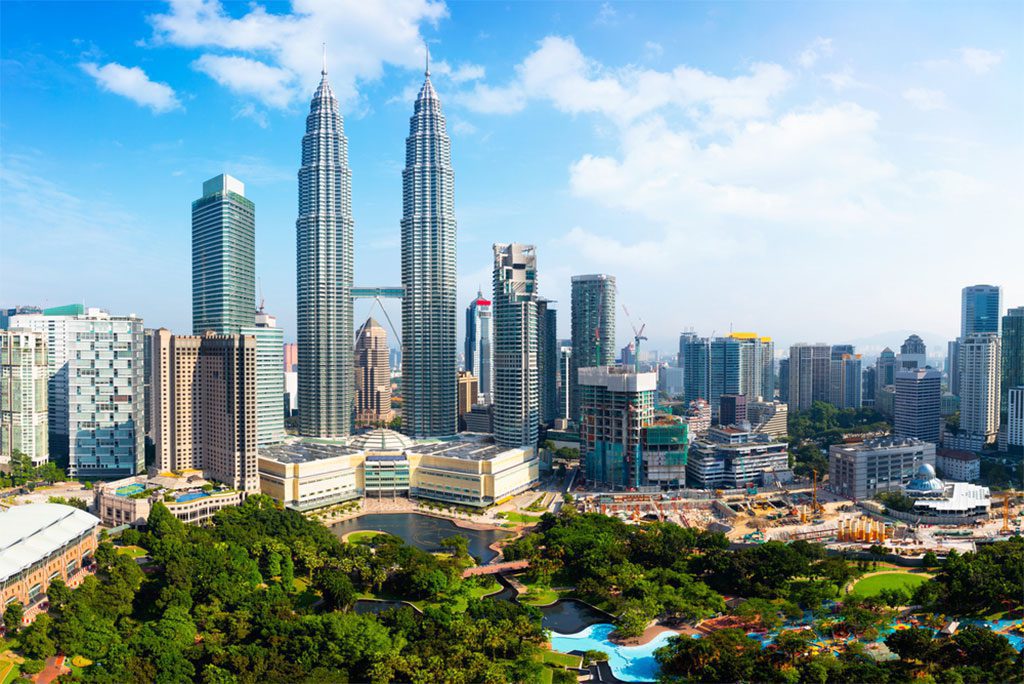
A stunning view of Kuala Lumpur’s iconic skyline in Malaysia. Image source: Patrick Foto/Shutterstock.com
Petaling Street is lined with bustling marketplaces and aromatic hawker bazaars; Bukit Bintang is pulsating with the excitement of the entertainment city; and the air is thick with the aromas of everything from Chinese chow mien to Portuguese fish barbeques.
A lantern-lit Chinatown sits next to neighbourhoods filled with Nepalese curry shops and Indian thali eateries, making this city one of the world’s most cosmopolitan metropolises.
In addition to the stunning views of the metropolis from the innumerable sky bars, tourists may also explore the enigmatic Batu Caves and other renowned Islamic art organisations.
2. Malacca
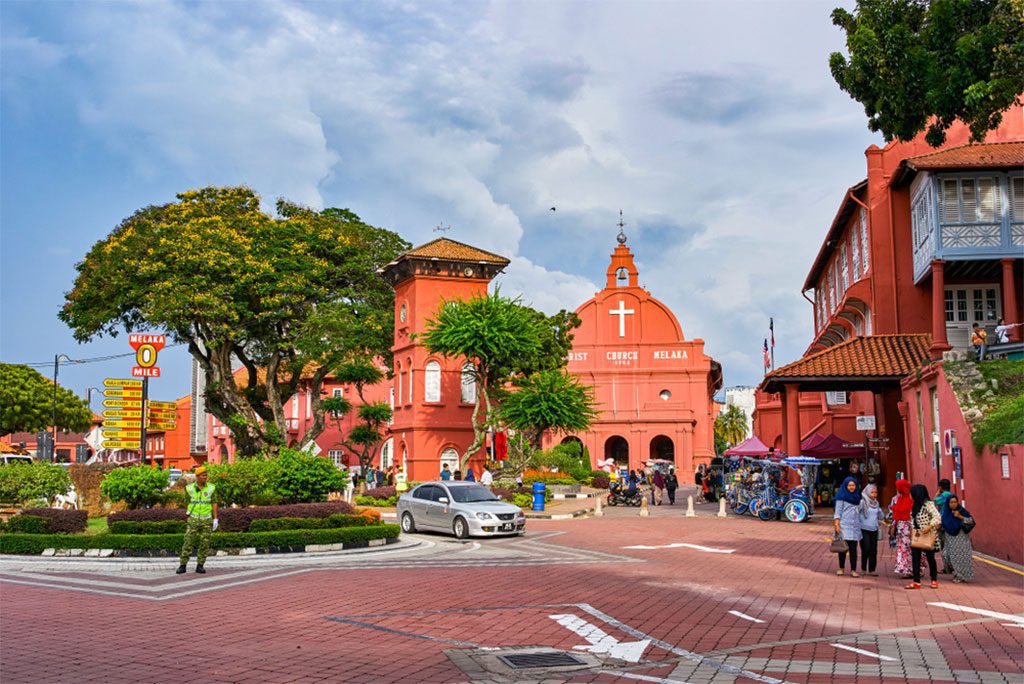
A picturesque view of Melaka’s historic buildings in Malaysia. Image source: Pelikh Alexey/Shutterstock.com
Malacca, with its bright red churches and colonial facades, is undeniably one of Malaysia’s greatest charms.
The city as it exists now is the result of decades of colonial domination by the Portuguese, the Dutch, and finally the British.
Their command of the Malacca Strait meant that they were able to profit from the passage of silk ships, spice caravans, and even armed fleets.
Maritime museums that immerse visitors in the area’s history may be seen today, and one of the greatest night markets in all of Singapore can be found along Jonker Walk.
3. Penang
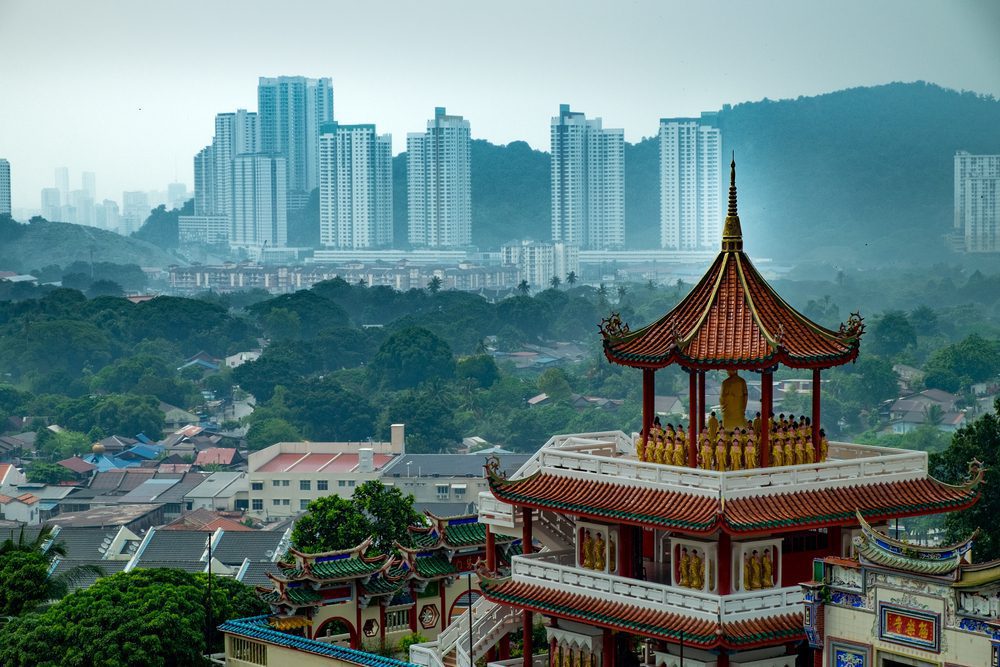
A breathtaking view of Penang Island from Kek Lok Si Temple in Malaysia. Image source: Puripat Lertpunyaroj/Shutterstock.com
A lot of people say that Penang is like a miniature version of the rest of Southeast Asia.
This makes perfect sense.
It’s no surprise that the whole city of George Town has been designated as a UNESCO World Heritage Site; the streets are filled with clicking rickshaws that wind through smoky Cantonese restaurants, blue-hued 19th-century homes, and the ageing remains of a proud British past.
There will be a fantastic variety of dishes to sample, from Chinese pancakes to Indian curries.
The beaches are another attractive feature; those of Batu Feringghi are azure and yellow, while those of Jerejak Island are fringed by tall coconut trees.
4. Gunung Mulu National Park

the stunning limestone pinnacles in Mulu National Park in Sarawak, Malaysia. Image source: Michel Arnault/Shutterstock.com
Gunung Mulu National Park’s old hills and weathered hoodoos never fail to captivate visitors.
The park (another UNESCO site) is one of the most inaccessible reserves in Borneo, requiring either a tense aircraft trip to the tarmac of small Mulu Airport or a 12-hour barge journey through snake-infested forests.
What is the reward? mossy rain woods where helmeted hornbills cry out; deep and dark cave systems teeming with unique bats; hiking over swaying canopy bridges; the towering grykes and caves of Mount Api; etc.
5. Langkawi
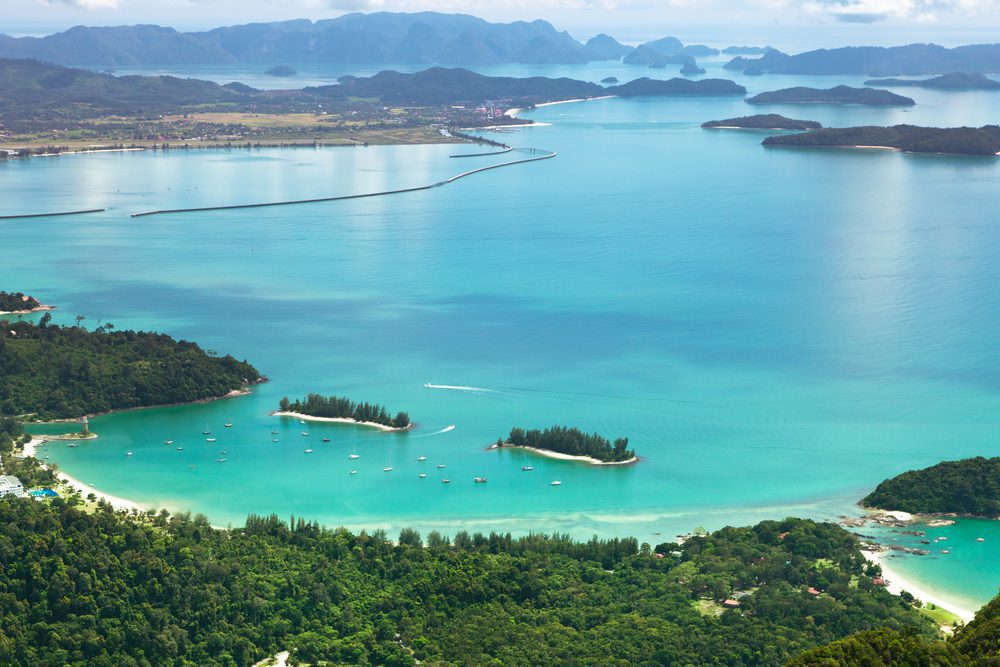
A serene view of the beautiful beach on Langkawi Island, Malaysia. Image source: Elena Ermakova/Shutterstock.com
Located on the northern tip of Malaysia, where the Andaman Sea meets the Malacca Straits, Langkawi is a sleepy island that gives a taste of the tropics.
Pantai Cenang, a popular spot for water sports, and the quiet, boulder-strewn shores of Pantai Kok have helped cement the area’s reputation as a premier destination for those seeking relaxation in the sun, water, sand, and surf.
Last but not least, the coconut palms of Datai Bay are home to five-star, all-inclusive resorts.
Put on your hiking boots and make your way to the flowing Seven Wells, or go to the panoramic SkyBridge high above the rainforests for some thrill-seeking.
6. Taman Negara National Park
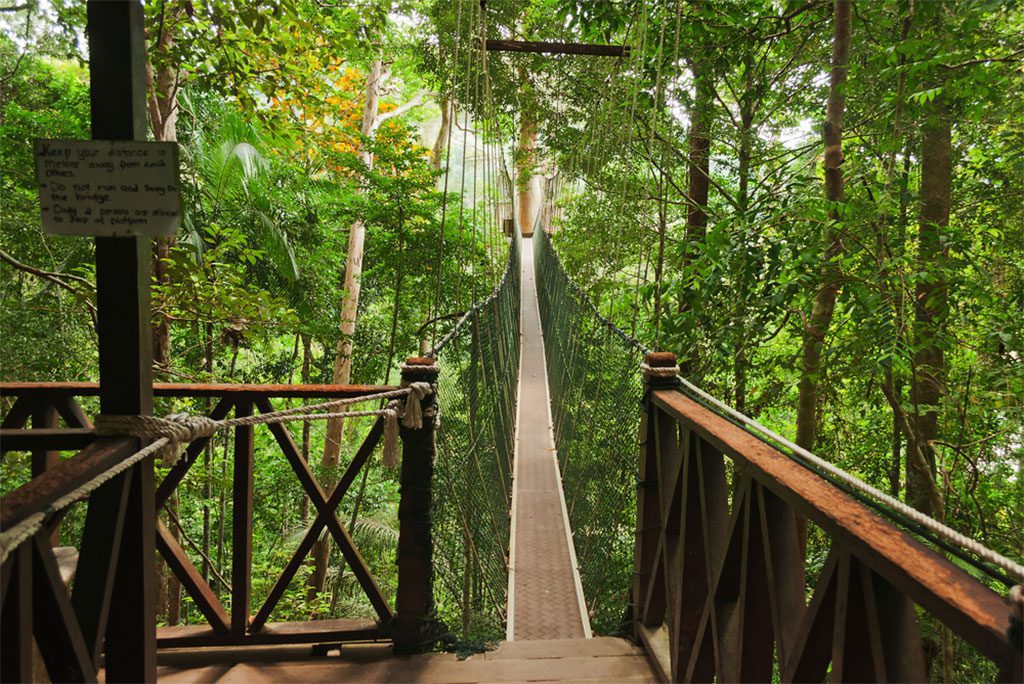
A serene view of the beautiful beach on Langkawi Island, Malaysia. Image source: Elena Odareeva/Shutterstock.com
The vast and beautiful Taman Negara national park is the Malay Peninsula’s crown gem.
Extending across a massive 4,300 square kilometres, it consists of virgin rainforest (some of the oldest developed woods in the world, according to some sources) and meandering rivers where elephants may be seen lounging on the muddy banks.
Visitors flock from far and wide to view the likes of the elusive Malayan tiger, cheeky wild macaques, Indian elephants, galumphing guars, and a long list of other animals. Taman Negara is being elevated to Malaysia’s ecotourism paradise.
7. Cameron Highlands
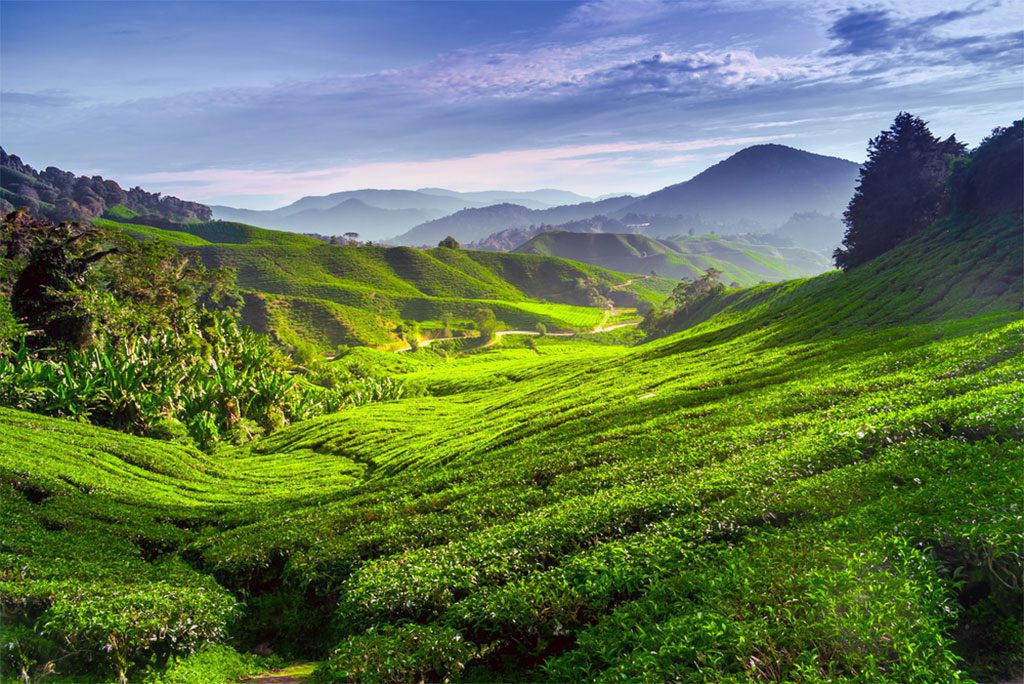
A picturesque view of a tea plantation in the Cameron Highlands, Malaysia. Image source: Goinyk Production/Shutterstock.com
Cameron Highlands, a hill station located more than a thousand metres above the lower parts of the Malay Peninsula, never fails to steal one’s breath away.
Midway between Penang and KL, it stretches out over the beautiful tea farms and rainforest that dot the main range’s high plateaus.
Thousands of well-trodden hiking trails offer breathtaking views of Batu Brinchang and the shabby tea towns, and maybe even a cultural encounter with the indigenous Orang Asli people, who thrive in the highlands’ unusual environment and mild temperatures.
8. Perhentian Islands
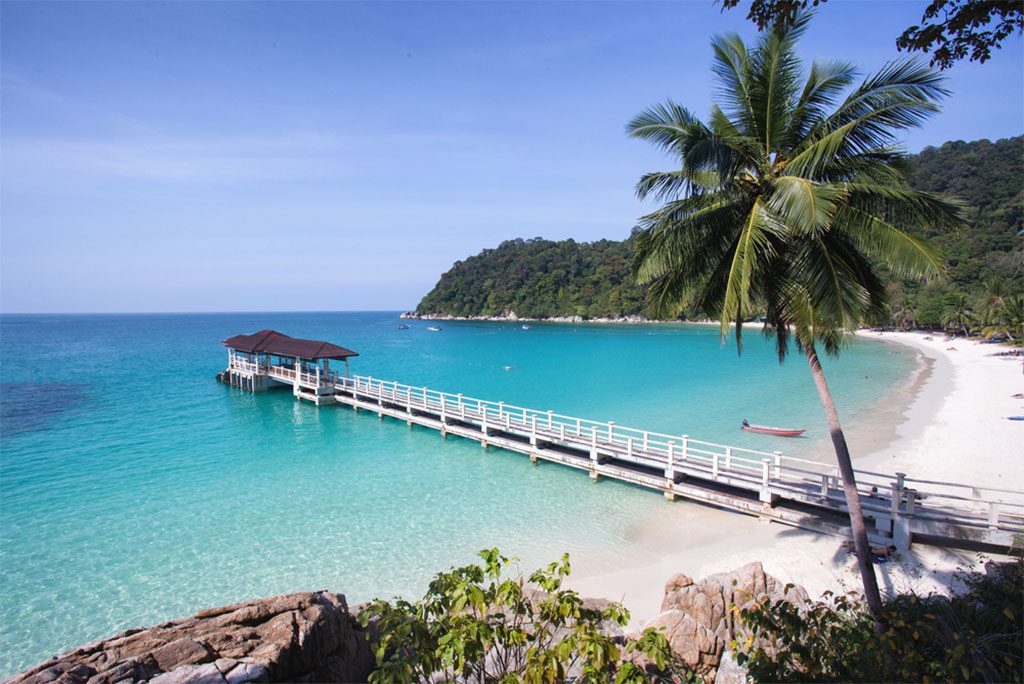
A stunning view of a tropical beach with crystal-clear waters and white sand in Malaysia. Image source: Dzerkach Viktar/Shutterstock.com
All the charm and beauty of a sun-kissed archipelago, the Perhentian Islands are found near the mouth of the Thai Gulf.
Usually reached by boat from Kuala Besut, these islands are encircled by a glittering coral reef.
Because of its position on Malaya’s eastern coast, you won’t have to deal with the throngs of tourists who visit Penang; instead, you may enjoy peaceful days lounging on Turtle Beach or Coral Bay.
However, that’s not the point.
Scuba diving is abundant, with well-known spots like Pinnacle and Sugar Wreck providing excellent conditions.
You may go on a hike in the bush and see giant lizards and snakes.
Plus, the nighttime fish fries are fantastic!
9. Semenggoh Nature Reserve
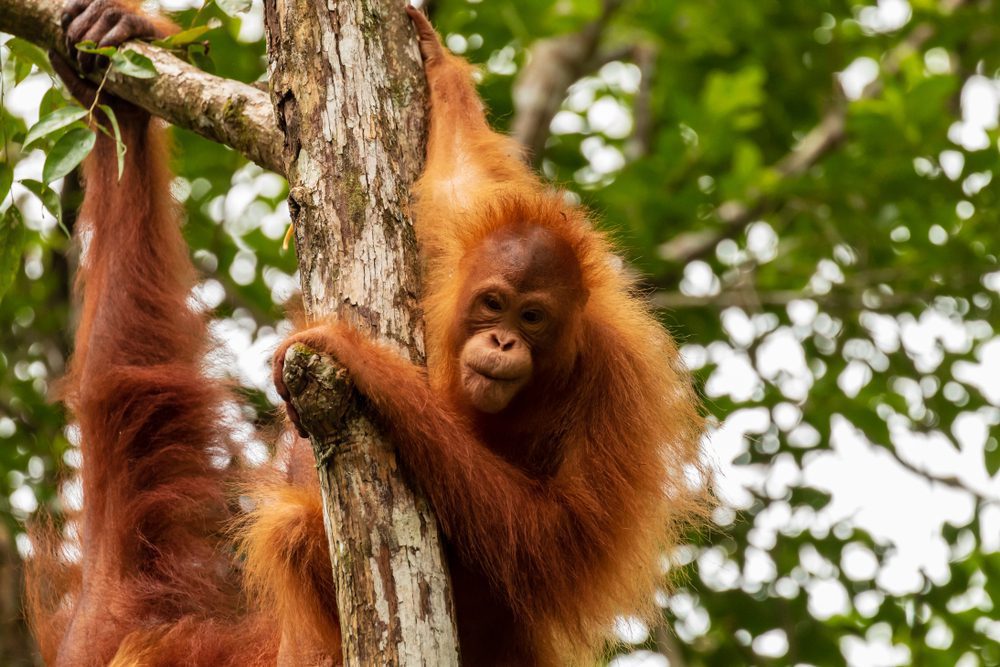
An adorable juvenile orangutan at Semenggoh Wildlife Center in Sarawak, Malaysian Borneo. Image source: Richard Whitcombe/Shutterstock.com
One of Borneo’s legendary natural treasures, Semenggoh, retains its throne.
Just outside of Kuching city, it flows into the unspoiled rainforests that rise with the high peaks of Sarawak’s interior.
There are tall teak trees and swaying jungle vines within its boundaries, as well as flowering papaya and banana plants.
That’s what the local group of 25 orangutans eats, and it’s the major attraction that draws tens of thousands of tourists here every year. (Some of the closest experiences with these interesting simians are possible at a renowned reserve located on the grounds of Semenggoh.)
10. Bako National Park
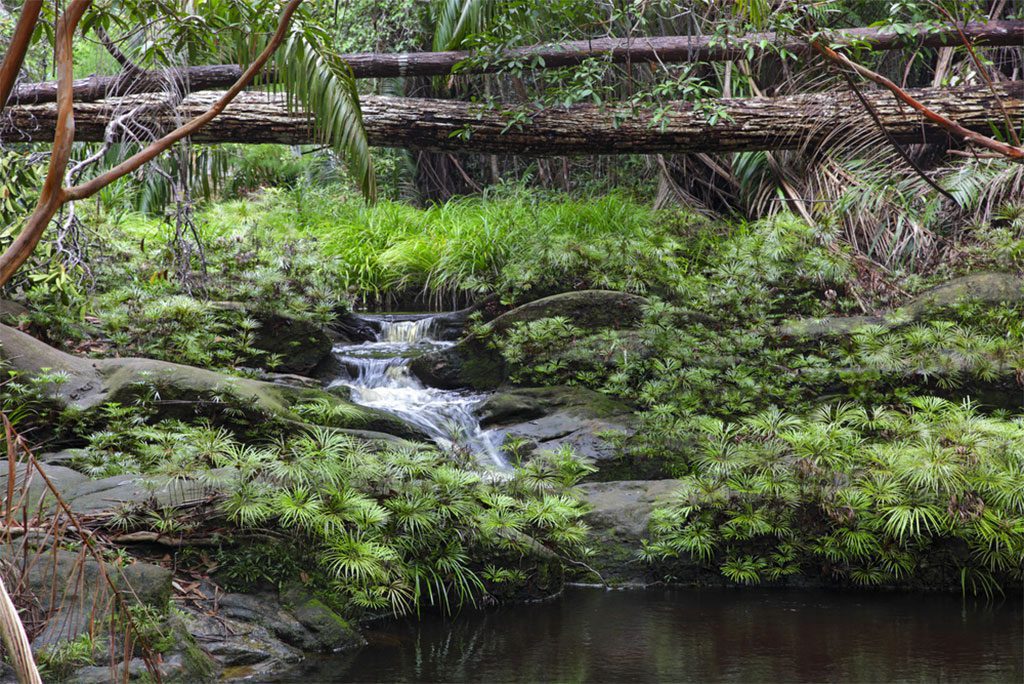
A magnificent view of Tajor Waterfall in Bako National Park, Sarawak, Malaysia. Image source: agap/Shutterstock.com
Bako National Park, which is located on the other side of Kuching from Semenggoh and protrudes into the pristine seas of the South China Sea, is also well worth a visit if you find yourself in Malaysia seeking the country’s untamed jungles and gorgeous hinterland.
Whereas the coastline may include sculpted granite stacks and sheer-cut cliffs, the interior may be dominated by lush woods with mossy vegetation.
This results in a fantastic variety of flora, including ferocious monitor lizards and secretive proboscis monkeys.
The whole park is accessible on foot, with routes winding through the forest, the mangroves, and the coastal bays.
11. Kuching
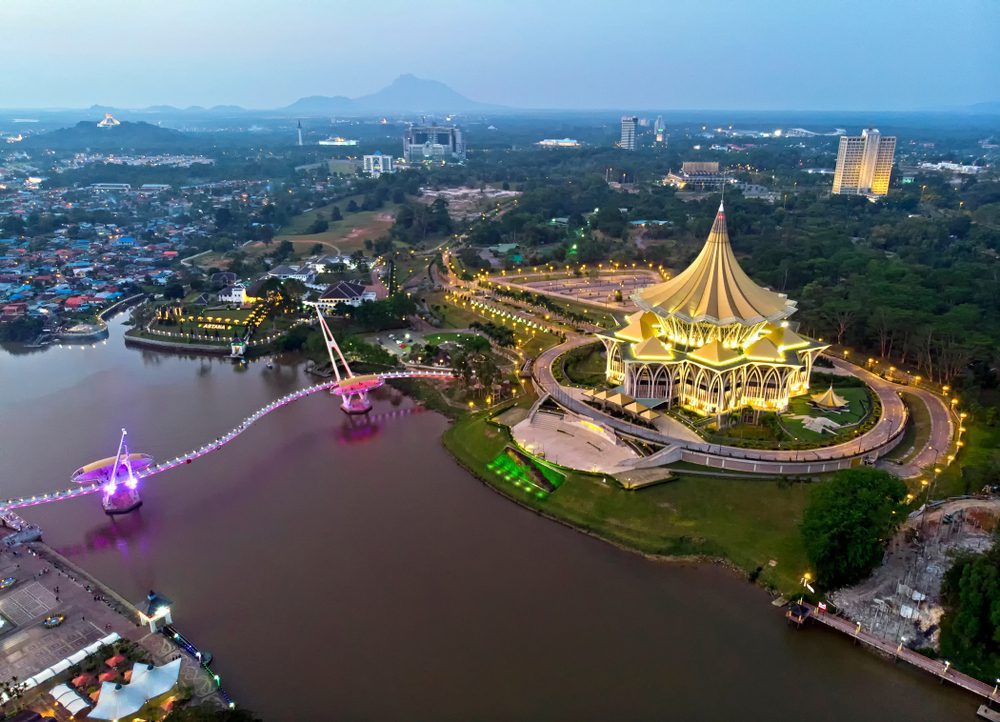
A stunning aerial view of the waterfront of Kuching city in Sarawak, Malaysia. Image source: fiz_zero/Shutterstock.com
Kuching will serve as many visitors’ introduction to eastern Malaysia and Borneo.
What better place to begin, then? The state capital of Sarawak, this city has been around for 200 years and has seen Sultanate control and British colonial authority.
Whitewashed Astana and the crowded prayer rooms of the Jamek Mosque are only two examples.
Chinese shops buzz with five-spice in Kuching, while Indian restaurants dish up paneer fries and bhajis.
Moreover, the town’s closeness to attractions like Bako National Park and the Semenggoh orangutan reserve is a major selling point.
12. Sipadan
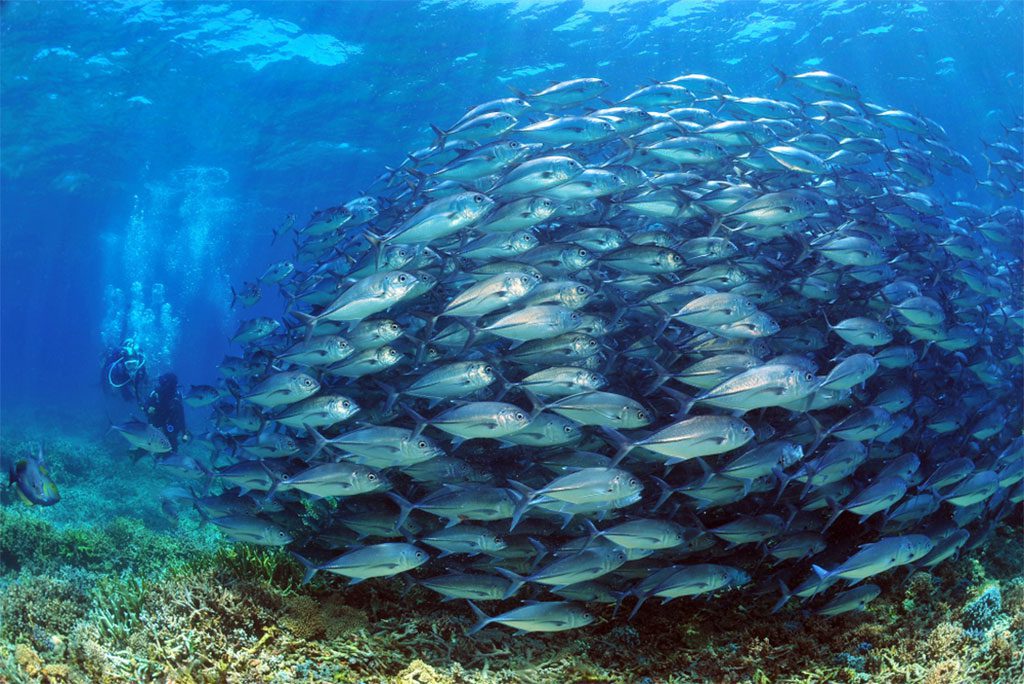
An incredible sight of a school of jackfish swimming in Sipadan Island, Malaysia. Image source: Simon Shin kwangsig/Shutterstock.com
Sipadan, Malaysia’s one and only oceanic island, is renowned for its mythical tropical riches and serves as a postcard-perfect diving site just waiting for the tourist brochure photographers to arrive.
The island’s cotton-white beaches are a welcome sight for the few boats that venture out from the mainland of Borneo. However, the island’s rugged slopes are covered in thick vegetation.
The true delights, however, are submerged.
You may go scuba diving with hammerhead sharks and endangered hawksbill turtles, see dazzling coral gardens, and swim with brilliantly coloured parrotfish, all while strapped into an oxygen tank.
13. Lambir Hills National Park
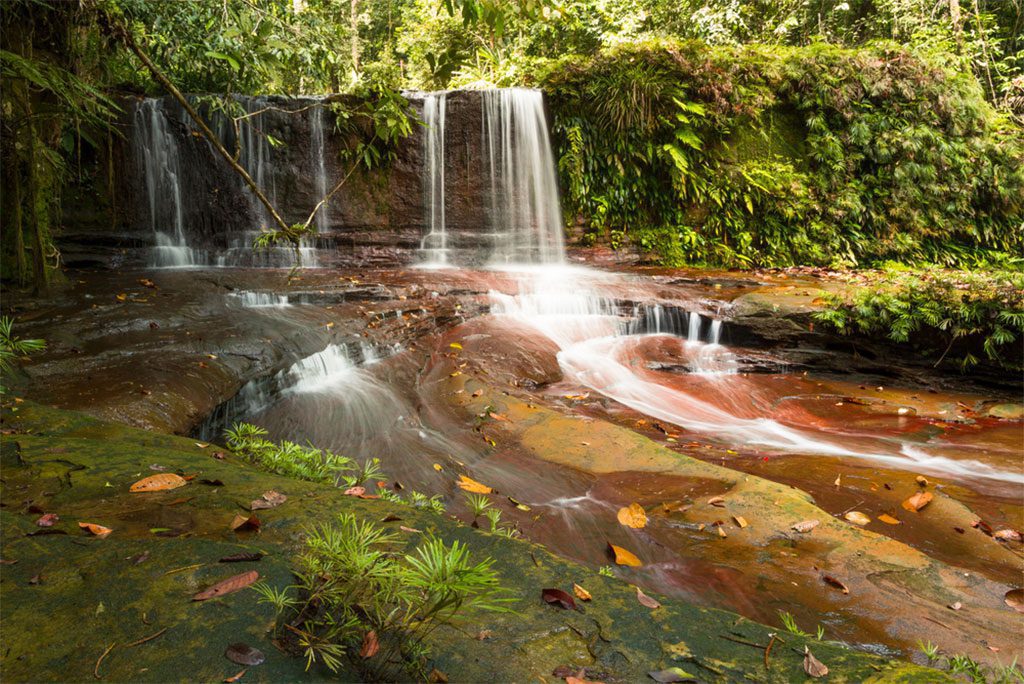
A stunning view of a waterfall in the lush jungle of Lambir Hill, Malaysia. Image source: steph photographies/Shutterstock.com
The Lambir Hills National Park is one of the smallest in Malaysia, yet it is conveniently located close to the border with Brunei.
Visitors, however, don’t seem to care about the valley’s little stature, and they continue to swarm here to gawk at the cascading waterfalls and ancient forests that fill its every nook and cranny.
There are plenty of opportunities to put on your hiking boots, with well-maintained boardwalks, twisting stairs carved out of the rock, and wooden bridges.
The Lambir Hills Waterfall, a paradisiacal cascade hidden deep inside the reserve, will soon be revealed. The habitat is home to families of endangered primates.
14. Johor Bahru
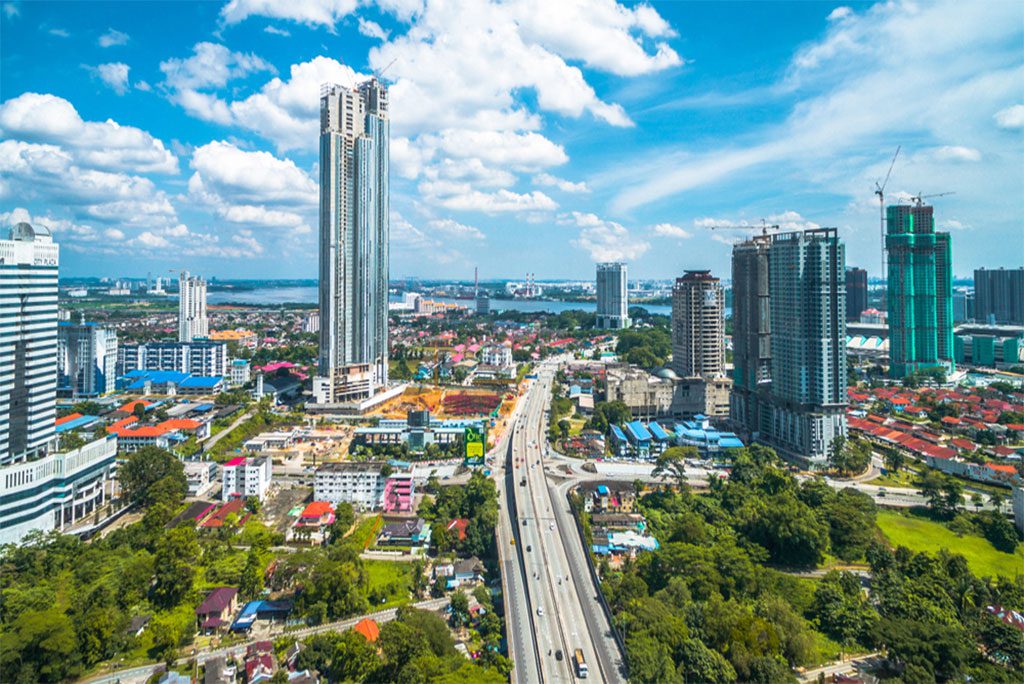
An amazing aerial view of Johor Bahru city in Malaysia. Image source: Muhammad Syahid/Shutterstock.com
Located at the southernmost point of the Malay Peninsula, Johor Bahru marks Singapore’s southernmost border.
For decades, it has been known mostly as a place to get administrative visas—a label that does not do justice to a city that is bursting at the seams with museums, galleries, and fantastic stores.
The Old Chinese Temple, standing Zen-like in the middle of the city, is worth a visit, as are the exquisite colonial-style towers of the Sultan Abu Bakar State Mosque.
Large shopping centres and markets like Tebrau City and KSL are easily accessible to consumers. Legoland Malaysia’s rides and arcades, however, are what bring in the most visitors from nearby towns and cities, as well as from neighbouring Singapore.
15. Taiping
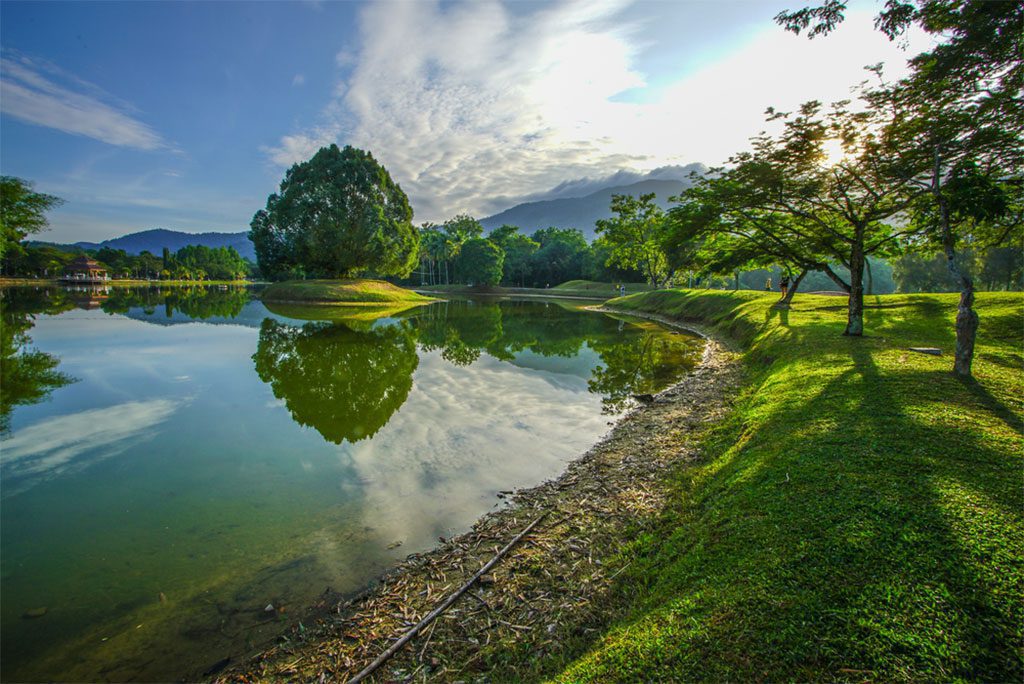
A beautiful view of Taiping Lake Gardens in Malaysia. Image source: Sinseeho/Shutterstock.com
“Super-wet” Within easy reach of the beaches and multiethnic neighbourhoods of George Town and Penang, the city of Taiping enjoys the protection of the Perak hills from the monsoons.
During the tin boom, a large number of Cantonese and San people flocked to the area from elsewhere in Malaysia to mine the hills around the city, much like how Penang was impacted by Chinese immigration over the course of many centuries.
Enjoy the tranquilly of Maxwell Hill, the mirrored waters of Taiping Lake Gardens, and the sombre Taiping War Cemetery, just a few of the beautiful urban gardens and parklands you may visit today.
In contrast, the town square is a mishmash of colonial-era façades and wood-framed Asian buildings concealing local restaurants and markets.


